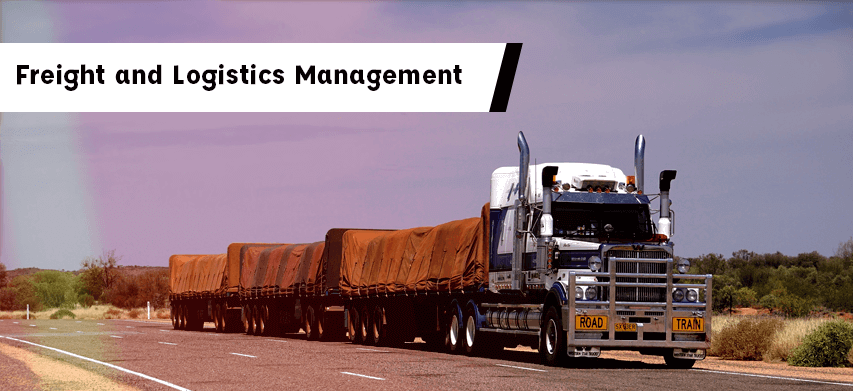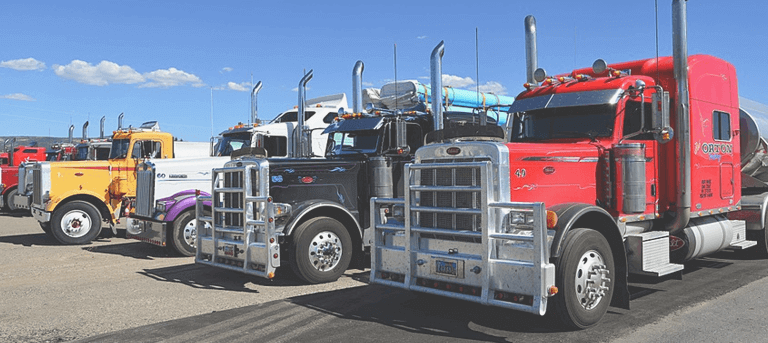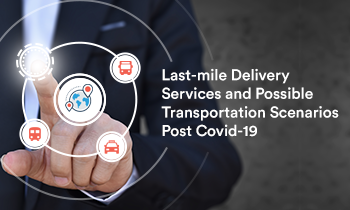Simply worded, the one point objective and agenda of any Freight and Logistics Management system is “the designated goods at the right place at the right time at the right price”. These two terms are complementary to each other; while Logistics may deal with everything related to movement and storage of goods, freight management specializes in planning, tracking, and controlling the transportation of goods.

While the Logistics part has its own challenges, one of the main challenges for any Freight Management system is communication. This challenge has become a common hurdle as the two systems are complementary in meeting the business objective. Whether the organizations grapple with these systems deal with 2PL or 3PL or 4PL type of logistics and no matter what types of solutions adopted, the challenge of communication has always been significant and sometimes formidable.
The aspect of communication can unfold into multiple challenges that can bring headaches to any transportation organization. The challenges related to communication make it a far too complicated story considering multiple types of goods and multiple modes of transportation; to keep the discussion relatively simple, this article focuses particularly on the road transportation and shipment related challenges.
List of Challenges
The Communication challenge in the case of Freight Management arises because of the need to keep track of many aspects throughout the process of transportation.
The Challenge of “Paper” Work: Depending on the goods in the consignments and the routes to be covered, a slew of paperwork may require. Certifications of compliance, pro forma invoices, dispatch notes, clearances, permits, and many such others may have to move along with the consignments. Not just the goods but the papers have to be right for the designated goods!

Wrong papers could cause many problems in transportation, misplaced consignments, delayed shipments, held-up drivers-vehicles, and legal issues just to quote a few. Ensuring the right paperwork is important, as record-keeping is one major challenge for the Freight management industry, no matter what kind of logistics is involved. Ensuring the right details are carried by every driver is important as also doing so in minimal time.
While the “paperwork” is important, the question that should be asked “is the paper important?” In this modern age when the world is moving rapidly towards the concept of Industry 4.0, papers may simply turn out to be just the environmental problems!
In another argument, it can be said that from the lean point of view, while efforts spent on providing details about goods and the details about the sender, transporter, and receiver of goods is important, all other efforts could be treated as process waste. But then the challenge is how to ensure providing the right details about the goods, the sender, and the recipient?
The Challenge of Scheduling and Tracking Trips: Optimizing freight loads and trips is an important aspect of Freight management. Making efforts to keep the costs and efforts as optimal as possible is necessary to achieve minimum time and competitive billing to the customers.
![]()
Trip Scheduling is about lining up transportation activities based on the completed and future trips to be made based on the plan. Scheduling the trips is important for ensuring optimal costs and minimum transportation time. Often shipment of goods is done in consignments that may combine multiple destinations and modes. It is thus also necessary to communicate the schedule so that logistics planners are allowed to plan the shipments from the starting point to the destinations.
While it is important to schedule trips it also becomes important to track the trips and more importantly keep the status information up-to-date. Tracking allows to not only keep a track of the trips and consignments in them but also offers the ability to provide timely information to the customers.
Route tracking is one of the essential steps in Route optimization which ensures that the vehicles travel through to the destination by the usage of a combination of rules concerning the cost of transportation as well as time taken to find the optimal best for these two. Traffic condition information may be made available for the planner as well as the driver in order to optimize the time and cost.
Planning, scheduling, and tracking are important aspects to ensure actions taken for deviations and contingencies are initiated in time. With the increasing vehicles worldwide, it’s not only important to track vehicles but also to do so in near real-time. The use of technologies like GPS becomes important in these aspects.
The Challenge of Tracking Consignments: The concept of containers and consignments has transformed the belief of goods transportation! Just the way the concept of a single trip using multiple airlines has done to the passenger transportation. In some cases, the container and consignment planning also become important, not just the safe-sound-&-timely consignment arrival although that is what matters to the customer. This is especially important in 3PL and 4PL logistics.
![]()
Without the appropriate information, automation and real-time tracking can be a nightmare to realize and achieve!
Although the relevance of the information varies from each step of the whole transportation cycle, all relevant details such as customer, consignment, container, transportation, and destination information must be maintained throughout as also the status of each consignment as a single package being transported. The transportation may follow long chain in starting from the customer site before reaching the destination:
Customer Consignment → Transporter → Container → Vehicle → Container → Destination Consignment
Depending on the scenarios, the combinations could vary but the importance of the information does not diminish! It may be possible one or more customer consignment could be transported in one or more containers which could be further transported in one or more vehicles and may eventually reach the destination at different times. All of these must be tracked throughout the transportation cycle. This requires status tracking by consignment as each one moves from one point to another in the transportation cycle.
The Challenge of Fleet Management: Transportation companies that specialize in delivering cargo from place to place using fleets of trucks and delivery vehicles face similar challenges. Their revenue is based on overall tonnage hauled and delivered.

For Fleet managers, it is not just scheduling and tracking of the trips but also the upkeep of the vehicles and the drivers as they become the constraints in planning and scheduling freight routes. Vehicles in maintenance, vehicles under breakdown, vehicles in parking, vehicles in traffic, vehicles in custody/hold-up, and vehicles in an idle condition, all these mean vehicles are not moving and are unproductive! This means that they are not hauling the loads and are not actually in transportation, the reason for which they exist.
It may not be possible to bring down the time occupied by these statuses to zero but must be minimized. As a first step, it is necessary to know statuses. Then take appropriate steps to minimize the downtime. Even as the restoration process is underway such as maintenance, repairs, release process, the statuses must be tracked and appropriate actions are taken. For example, choosing between breakdown maintenance and preventive maintenance to ensure the idle time between trips is well spent for the vehicles could be away! Ensuring that the vehicle papers are intact for ongoing transportation may ensure vehicles not getting held-up. Hence Planning for the freights and the loads may bring down the number of idle vehicles to the minimum.
It is not just about managing the vehicles but the human aspects Viz., Driver Management which is an equally important aspect of Fleet Management. Ensuring drivers are fully equipped with the required resources and information and take adequate rest before any scheduled travel may ensure the safe and timely operation of the vehicles.
Ensuring proper and effective communication becomes essential to ensure the above challenges are met effectively.
Wrapping Up,
It can be seen from the above discussion about the various challenges involved in the Freight Management how important it is to continuously track the consignments throughout the transportation cycle.
The Freight Management and Logistics is a profitable business (or part of a profitable business). The last but not the least of the expectations from a solution shall be to enable payments, with an ability to visualize the top lines and bottom lines on the financial side. After all the cost savings and time savings even if they result in increased customer satisfaction, it matters most if they also increase the profit margins and revenues for the transportation company.
Is such a solution possible in reality? The one that is flexible, smart, real-time operative and effective in communications!? Try out Mobisoft Infotech’s Truck Dispatch Software Solution.
Author's Bio

Nitin Lahoti is the Co-Founder and Director at Mobisoft Infotech. He has 15 years of experience in Design, Business Development and Startups. His expertise is in Product Ideation, UX/UI design, Startup consulting and mentoring. He prefers business readings and loves traveling.


